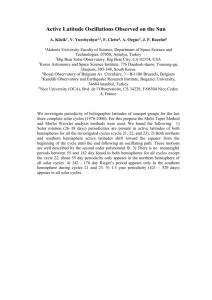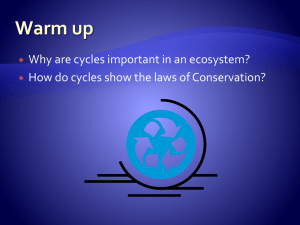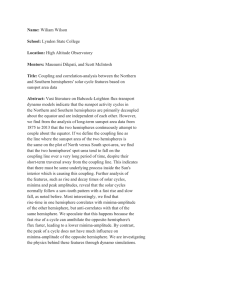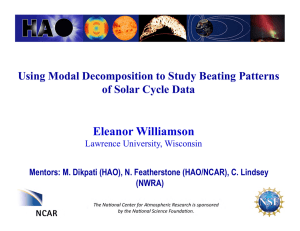Using Modal Decomposition to Study Beating Patterns of Solar Cycle... Eleanor Williamson Lawrence University, Appleton, WI
advertisement
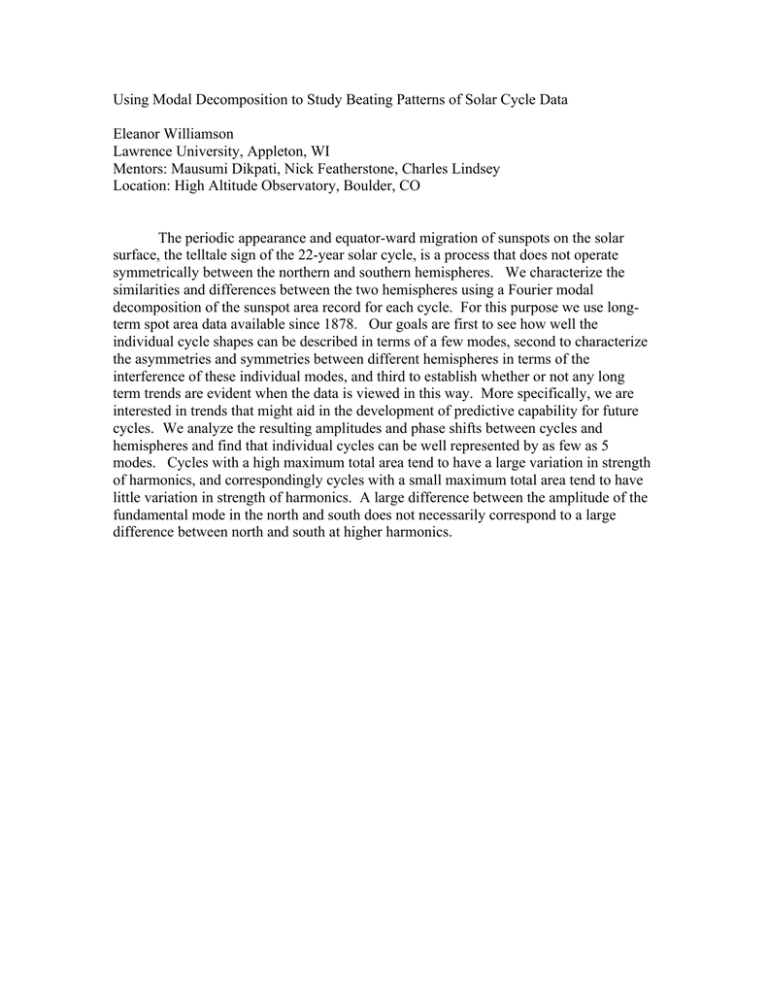
Using Modal Decomposition to Study Beating Patterns of Solar Cycle Data Eleanor Williamson Lawrence University, Appleton, WI Mentors: Mausumi Dikpati, Nick Featherstone, Charles Lindsey Location: High Altitude Observatory, Boulder, CO The periodic appearance and equator-ward migration of sunspots on the solar surface, the telltale sign of the 22-year solar cycle, is a process that does not operate symmetrically between the northern and southern hemispheres. We characterize the similarities and differences between the two hemispheres using a Fourier modal decomposition of the sunspot area record for each cycle. For this purpose we use longterm spot area data available since 1878. Our goals are first to see how well the individual cycle shapes can be described in terms of a few modes, second to characterize the asymmetries and symmetries between different hemispheres in terms of the interference of these individual modes, and third to establish whether or not any long term trends are evident when the data is viewed in this way. More specifically, we are interested in trends that might aid in the development of predictive capability for future cycles. We analyze the resulting amplitudes and phase shifts between cycles and hemispheres and find that individual cycles can be well represented by as few as 5 modes. Cycles with a high maximum total area tend to have a large variation in strength of harmonics, and correspondingly cycles with a small maximum total area tend to have little variation in strength of harmonics. A large difference between the amplitude of the fundamental mode in the north and south does not necessarily correspond to a large difference between north and south at higher harmonics.
